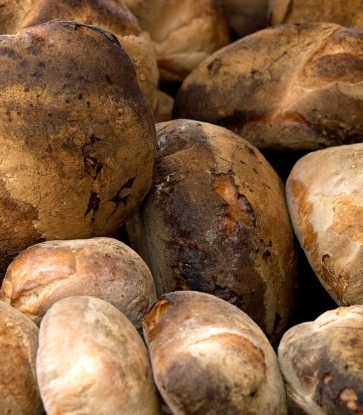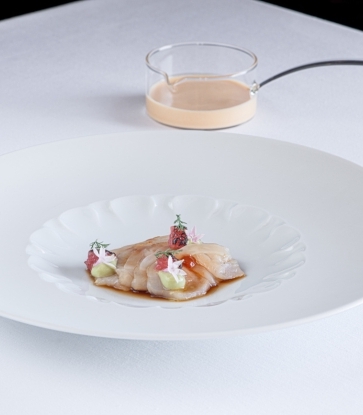Why not let the knights be your guide? They are the ones who have given this city its grandeur and literally its name as well... Along the way, there will of course be opportunities to enjoy some remarkable culinary experiences as well. First of all: Valletta is easy to explore. Leave your car on the outskirts of this small, fortified peninsula city. Valletta occupies a headland jutting out into the sea, and is flanked by two natural harbours. The streets are arranged in a regular criss-cross pattern, making it virtually impossible to get lost in the city. Valletta has been recognized as a UNESCO World Heritage Site since 1980. The city has more than 300 official monuments and numerous iconic buildings that serve as reference points for visitors. Another thing to remember is the city’s extremely small size. Valletta is no more than 600 meters across at any point, and it is about one kilometre long. With a population of 6,000, you are now in the smallest and sunniest European capital, sometimes quite rightly described as an open-air museum.
In the footsteps of the Knights of Malta
As you stroll through Valletta's peaceful streets, it can be hard to believe that today’s city owes its origin to a noble order of knights. The Knights of St. John first came into being during the Crusades, to protect pilgrims travelling to the Holy Land. As the Order began to come into conflict with the Ottoman Empire, it acquired a military purpose. Following successive defeats, however, the knights were forced to leave Jerusalem and then also the island of Rhodes, arriving in Malta in 1530. Attracted by this area, with its strategic position and extraordinary location, they came to live in Vittoriosa (Birgu). They came under siege again in this place, but in 1565 that conflict ended in victory for the knights. Jean de Valette, the leader of the Order, known as the Grand Master, then decided to convert the site into a fortress with strong fortifications. Thanks to him the city not only acquired its strategic role, but it took his name as well: Valletta.

A unique cathedral with a stunning interior
Now we know that the knights were responsible for the origins of this city in the sixteenth century, we can also take a closer look at what they have created and bequeathed to us. One absolute must, in fact the number one attraction in all the Maltese islands, is St. John’s Co-Cathedral, in the centre of Valletta. Walking along Republic Street (Triq ir-Repubblika), its stark lines and imposing size naturally catch the eye. Halfway down the main street that runs through Valletta like a central axis, the cathedral is located on the right-hand side. It was founded by the Crusaders and dedicated to John the Baptist, their patron saint. Most visitors to the Cathedral fall silent on entering, awed at the contrast created by the lavish and richly decorated interior. The baroque interior of this church dates back only to the seventeenth century. At that time the Order of Malta was seeking to increase its power and prestige. The knights also viewed this beautifully decorated cathedral as their final resting-place. The floor of the church is therefore made up of 400 beautiful and perfectly arranged tombstones, inlaid with marble. For this reason, stiletto heels are not allowed inside.

Masterpieces in Malta
Don't forget to visit the prayer chapel or oratory to admire Malta's most treasured painting. This work of art is viewed as one of Europe’s most compelling paintings, in the same league as the Mona Lisa or The Night Watch. In ‘The Beheading of John the Baptist’, Caravaggio, the most famous painter of the early Baroque period, controls the light in a wonderful chiaroscuro technique, while creating a work of stunning narrative realism on an impressive scale. The painter himself probably realised that it was an exceptional achievement, This is the only masterpiece to be signed by Caravaggio. The oratory also contains a second, smaller masterpiece by the same artist, depicting Saint Jerome. It is equally recognised as setting the standard within its genre due to the use of contrasts between light and dark. One thing to remember: there is an entrance fee for visiting the cathedral, which in some ways serves as a museum. The price includes an excellent multilingual audio guide, which will prove very useful during your visit.
Sophisticated but casual dining
After all these extraordinary and perhaps unexpected experiences, you may be looking for a place to rest for a while. The cathedral district, like the whole of Valletta, is dotted with numerous bars and restaurants with outdoor terraces. Running in parallel with Republic Street a little further down at the corner of Merchant Street (Triq il-Merkanti) and St. Christopher's Street (Triq San Kristofru) are three tiny restaurants which are all included in our Michelin selection. On one side is Under Grain, which has been awarded a MICHELIN star. Next door, run by the same owner, is the Bib Gourmand Grain Street with an attractive area for al fresco dining. Its kitchen produces casual Mediterranean dishes like lasagna with squid, octopus and 'nduja sausage, as well as sophisticated desserts such as lemon meringue pie with olive oil and thyme ice cream. Across the street, Kaiseki creates very tasty Asian-inspired dishes such as refined gyoza and a very crispy and juicy chicken karaage.

A visit to the Grand Master ... and the president
After recharging your batteries, it is time for a visit to the nearby Grand Master's Palace, built at the request of the Order of Malta in 1571. The building was designed by the same architect as St. John's Co-Cathedral. It served as a residence for the Grand Master of the order, elected to this position for life, until the knights were forced by Napoleon to leave the island in the late 18th century. The scale of this palace and its courtyards dotted with fig trees, provide an impression of the opulence in which the Grand Masters lived their lives. Today the palace is home to one of the largest collections of weaponry from the 16th and 17th centuries. There are 5,700 objects in all, as well as a hall containing a unique collection of tapestries. The palace is now the official residence of the President of the Republic. This is where he receives guests, so at those times it is temporarily closed to the public.

A visit to the theatre
Close to the Grand Master's Palace in Old Theatre Street (Triq it-Teatru I-Antik) is Teatru Manoel, founded in 1731 by Portuguese Grand Master António Manoel de Vilhena. That makes it one of the oldest theatres in Europe. Due to its unique character and historical interest, tourists can visit the theatre as a museum during the day. It is a small, cosy and beautifully decorated theatre, with its boxes in gilded wood and a ceiling boasting a trompe-l'oeil painting. As well as being a historical monument, the theatre seats an audience of just over 600 and serves as Malta's National Theatre and the home of the Malta Philharmonic Orchestra.
At Bibendum
Bib Gourmand Rubino on Old Bakery Street (Triq-I-Ifran) is a bistro that has made its home in a patisserie dating from 1906. One speciality made here was Kassata ta l-irkotta, still on the menu to this day along with many other classic Italian and Maltese dishes. A little further on, the team in Aki's kitchen on the corner of Strait Street and Santa Lucia Street offers Asian dishes, mostly Japanese-inspired, in a stylish basement restaurant. The food from its open kitchen, which can be viewed from every table, includes saikayo miso black cod and soft shell crab with avocado, spring onion and tobiko.

1565
Our walk ends at the northernmost point of Valletta, where the knights built Fort St. Elmo, the fortress guarding the entrance to the fortified city. It was built in 1552 in the shape of a five-pointed star. During the Siege of Malta in 1565 this fortress held out against Ottoman attacks for a month. All the knights and soldiers died, but the Turks were still forced to retreat because they were unable to take Valletta and Malta. Afterwards, the resistance offered to the Ottomans by the knights was met with huge appreciation in the courts of Europe, and money soon began flooding into Valletta, leading to the continued development of the city as a fortress. That work was carried out under Grand Master Jean de Valette. Fort St. Elmo is open to visitors, as well as the National War Museum which is now on the site and highlights the history of Malta during WWI and WWII.
Stars
A perfect - and delicious - way to round off the day can be found at the table of chef and restaurant owner Jonathan Brincat, nicknamed Noni, at the end of Republic Street (Triq ir-Republica). Noni is a Michelin-starred restaurant where he presents seasonal cuisine on the theme of sustainability, with an emphasis on local produce. The former home of ‘Xmun Borg & Sons Bakery & Confectionery’ is now a superb restaurant.
A little further on, ION Harbour by Simon Rogan, the only restaurant in Malta to be awarded two MICHELIN stars, offers complex dishes, using produce grown, reared or caught from the Maltese islands wherever possible, following the Simon Rogan’s farm-to-fork philosophy. When it comes to the wine, ask for some Maltese producers and you will discover excellent choices. The perfect scene to end a day walking around historic Valletta.















